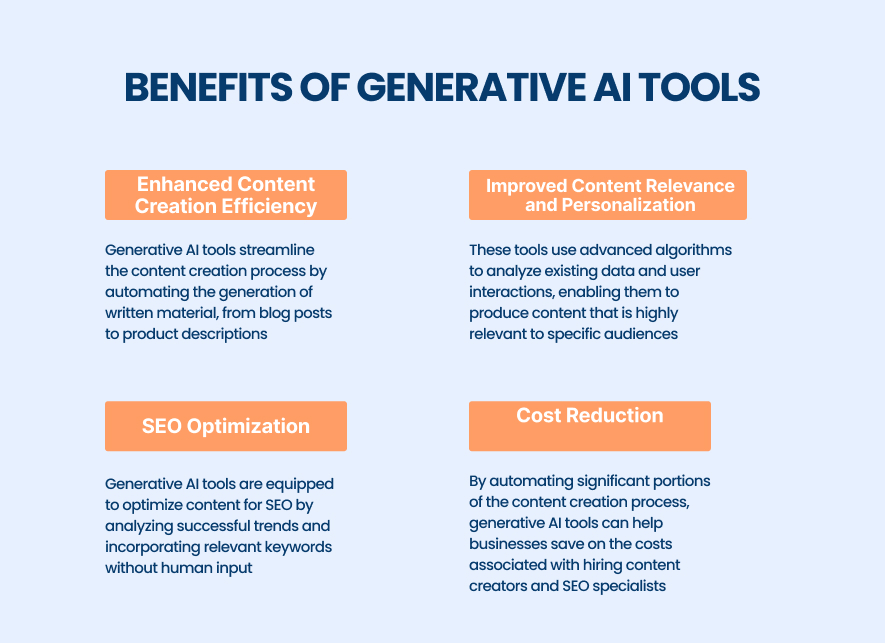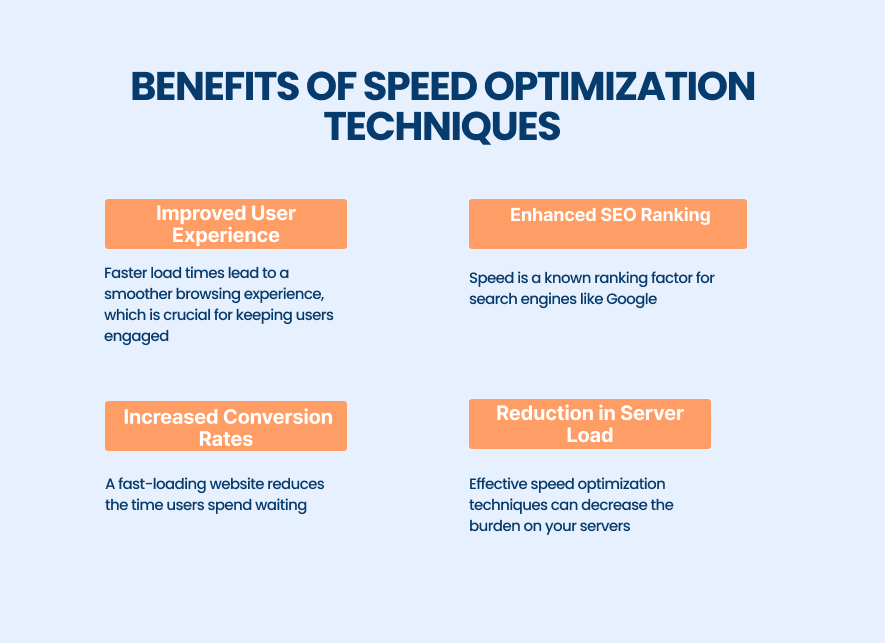Future SEO trends are rapidly evolving, driven by advances in artificial intelligence, voice and visual search, mobile optimization, and new search engine algorithms. As the digital landscape continuously evolves, so does the search engine optimization (SEO) field.Staying ahead of the circle is not just an advantage. It’s necessary for businesses aiming to thrive online. SEO will undergo transformative changes in the next five years, driven by technological advancements, changing user behaviors, and new search engine algorithms.
As the digital landscape continuously evolves, so does the search engine optimization (SEO) field.
Staying ahead of the circle is not just an advantage—it’s necessary for businesses aiming to thrive online.
While some wonder, “Will SEO exist in 5 years?”, the reality is that SEO is not disappearing, it’s evolving.
SEO will undergo transformative changes in the next five years, driven by technological advancements, changing user behaviors, and new search engine algorithms.
You must understand why you need SEO and the essential trends to apply.
Source: Semrush
An SEO Agency can suggest important strategies for the appliances.
This blog post will clarify future SEO trends and what to expect during the next five years.
Will SEO Exist in 5 Years?
This question is becoming more common as AI, voice search, and new ranking factors reshape digital marketing.
The answer is clear: SEO will not only exist but will continue to be a critical tool for online visibility.
However, businesses must adapt to algorithm changes, prioritize user experience, and integrate AI-driven optimization to stay competitive.
Traditional SEO methods may fade, but search optimization as a concept will evolve, ensuring brands remain discoverable in an increasingly digital world.
AI and Machine Learning in Future SEO trends
In the ever-evolving world of future SEO trends, artificial intelligence (AI) and machine learning (ML) are poised to revolutionize how we understand and implement search engine strategies.
As we look towards the future of SEO, these technologies are becoming integral in deciphering search engines’ complex algorithms, enhancing the accuracy of SEO strategies, and ultimately ensuring that content resonates with both search engines and users.
Role of AI in Content Creation
AI’s integration into content creation marks a significant shift in developing SEO strategies.
By leveraging AI, content creators can produce highly optimized, engaging, and user-focused content. This change is not just about keyword stuffing or traditional AI in SEO practices; it’s about creating value-driven content that serves user intent and adheres to E-A-T principles (Expertise, Authoritativeness, Trustworthiness).
Generative AI Tools
Generative AI tools are at the core of this transformation. These tools use developed algorithms to generate content ideas, suggest improvements in real-time, and even draft content that aligns with the core web vitals and SEO best practices.

Benefits of Generative AI Tools for SEO:
- Efficiency: Automates repetitive and time-consuming writing tasks, allowing teams to focus on strategy and creativity.
- Scalability: Enables quick production of large volumes of optimized content without compromising quality.
- Data-Driven Insights: Provides real-time feedback based on search trends and competitor analysis, helping fine-tune keyword targeting.
- Consistency: Ensures tone, formatting, and messaging stay uniform across multiple pages or platforms.
- Performance Optimization: Tests variations of titles, meta descriptions, and CTAs to maximize click-through rates and engagement.
- Personalization: Adapts content for specific audiences using user intent and behavior data, improving relevance and conversions.
For instance, AI-powered writing assistants can analyze the top-performing content across the web for a given topic, identify patterns and gaps, and guide creators to produce original and highly optimized content for search engine results pages (SERPs).
The use of these tools extends beyond mere content generation. They are instrumental in A/B testing headlines, meta descriptions, and even different content formats to see what performs best in SERPs. This approach not only enhances the efficiency of content production but also ensures that the output aligns with the specific preferences of targeted user demographics, leading to better engagement and conversion rates.
Natural Language Processing Improvements
Natural language processing (NLP) improvements are another pillar of AI in the future SEO trends’ landscape. NLP technologies allow machines to understand and interpret human language, which is valuable for SEO.
Source: Market.us
With recent advancements, NLP can analyze content sentiment, the context around relevant keywords, and the overall text readability, critical factors in ranking algorithms.
These advancements also play a crucial role in understanding user intent, a central element of modern SEO strategies. By better understanding users’ queries, NLP helps tailor content that addresses user concerns, questions, and needs. This alignment improves user experience and boosts content’s relevance in search engines’ eyes.
Moreover, NLP is instrumental in optimizing for voice search, which is becoming increasingly popular. As voice queries are more conversational and longer than text-based searches, NLP can help parse them and match them with the most relevant content. This capability is essential as the shift towards mobile and voice shapes search behaviors.
The Impact of AI and ML on SEO
Integrating AI and ML in SEO represents a shift towards more adaptive, intelligent, and user-focused strategies. No longer can SEO be seen merely as a technical checklist; it’s evolving into a dynamic field that requires a deep understanding of content relevance, user behavior, and technological possibilities.
Source: SeoLeverage
As search engines become more sophisticated, the future of SEO will increasingly rely on tools and technologies that can predict user trends, automate tedious tasks, and deliver insights that are beyond the reach of manual analysis. For businesses, this means that staying updated with AI and ML advancements is not optional but a critical component of their digital strategy.
On-page SEO vs. off-page SEO encompasses the strategies used directly within a website to improve its position in the search rankings versus those employed externally, such as backlinks and social media engagement, to enhance its authority and visibility.
Looking ahead, the trajectory for programmatic SEO is clear—more personalized, immediate, and intuitive search experiences driven by AI and machine learning. Businesses that can effectively harness these technologies will find themselves well-placed in the competitive landscape of the future, where search engine algorithms and user expectations are continuously evolving.
Voice Search Optimization
As the landscape of search engine optimization continues to develop, voice search stands out as a transformative force, shaping future SEO trends.
Source: Infinite Dial
With the increasing popularity of voice-activated items and assistants, optimizing for voice search is not just an option—it’s necessary for a forward-thinking SEO strategy.
This shift towards voice interaction presents unique problems and opportunities for brands to connect with their users more personally and immediately.
Rise of Voice Assistants
The development of voice assistants like Amazon Alexa, Google Assistant, and Apple Siri has dramatically changed how consumers interact with devices. These tools are integrated into everything from smartphones and tablets to home automation systems and vehicles, making voice search a critical touchpoint for consumer interaction.
Source: SemRush
The convenience and accessibility of voice assistants have encouraged users to turn to voice search for quick answers, local business searches, and even shopping.
Adapting Keywords for Natural Speech Patterns
One key consideration in voice search optimization is adapting keywords to fit natural speech patterns. Unlike traditional search queries that often involve shorthand or fragmented phrases, voice searches are more conversational and longer.
This requires shifting from traditional keyword strategies to long-tail keywords and complete sentences. Effective voice search optimization must consider how real people speak and ask questions in daily life, which often includes filler words and longer queries.
For instance, instead of typing “weather New York,” a user might ask, “What’s the weather like in New York today?” This shift demands an SEO strategy that targets more conversational phrases and anticipates the natural language questions that users are likely to ask.
Optimizing for these phrases means incorporating them into the content in a way that sounds natural and provides direct, concise answers that voice assistants can easily pick up and deliver to users.
Local SEO and Voice Search
Local SEO becomes increasingly important when it comes to voice search. Many voice searches are local in intent, such as finding nearby restaurants, checking local business hours, or finding the nearest hardware store.
To capitalize on this, businesses need to optimize their local SEO strategies by ensuring their local listings are complete and accurate, using region-specific keywords, and making their content relevant to local customers.
This includes managing online business listings, gathering positive reviews, and providing clear, up-to-date contact information. Additionally, schema markup SEO can play a crucial role here, as it assists search engines in understanding the context of your content, including the geographic specificity that can boost local search visibility in voice queries.
Impact on SEO Strategies
The rise of voice search profoundly influences advanced SEO strategies, urging future SEO trends for professionals to rethink how they craft and structure content.
FAQs and Conversational Content
Combining an FAQ section on your website can be particularly effective in aligning with the conversational nature of voice queries.

According to HubSpot, over 33 percent of respondents say they use voice search daily to ask quick, question-based queries, making FAQs a direct bridge between user intent and your content.
FAQs cater to voice searches’ direct, question-based nature by providing straightforward answers to common questions. This helps rank for voice searches and enhances the site’s relevance and authority.
Furthermore, developing content that mimics a conversational tone can significantly benefit voice search SEO. Content that answers questions directly uses a conversational tone, and is structured in an easy-to-follow format is more likely to be picked up by voice assistants. This approach aligns with E-E-A-T Google guidelines, as providing clear, authoritative, and trustworthy content is paramount.
Visual Search in Future SEO trends
Visual search technology is rapidly transforming the way users interact with online content, blending the physical and digital worlds through the power of image recognition.
Source: Google
This innovation enhances user experience and opens new avenues for SEO strategies, particularly in e-commerce and multimedia content.
As we delve deeper into the implications of visual search, it becomes clear that staying ahead in future SEO trends now requires a strong visual component.
Enhancements in Image Recognition Technology
Recent advancements in image recognition technology have significantly boosted the capabilities of visual search engines. These enhancements are powered by sophisticated AI algorithms that can accurately analyze and interpret images.
For businesses, this means becoming more discoverable through image-based searches, an increasingly important component in mobile SEO and international SEO contexts for future SEO trends.
Optimizing Images for Visual Search
Optimizing images for visual search involves more than just high-resolution pictures. It requires images to be tagged with accurate and descriptive metadata, use of alt-text, and adherence to SEO-friendly file naming conventions.
This practice helps the Search Generative Engine (SGE) to effectively index and retrieve images in response to search queries, enhancing your visibility on SERP features.
Additionally, implementing structured data to provide context to images can elevate their discoverability, making them more likely to appear in relevant searches, including zero-click searches where users get immediate answers through images.
Integrating Visual Search into E-commerce
For e-commerce, visual search offers a unique opportunity to connect with users who may not have a specific product in mind but are inspired by the visual content they encounter.
Source: Databridgemarket
By integrating visual search capabilities into e-commerce platforms, businesses can allow customers to search for products using images, thereby simplifying the discovery process. This not only improves user experience but also boosts the likelihood of conversions.
Retailers should consider enhancing their product pages with high-quality images that can be easily indexed by visual search tools, thus aligning with future SEO trends.
Video SEO Strategies
As content consumption preferences shift towards video, optimizing video content for search engines has become essential.
Source: Wyzovl
SEO Video now plays a pivotal role in a comprehensive digital marketing strategy, combining everything from video creation to its presentation on search engines.
Video Transcriptions and SEO
Video transcriptions serve a dual purpose. They make your video content relevant to a broader audience, including those with hearing impairments, and they also provide search engines with text to index.
This is particularly important in SEO vs. SEM, where every organic strategy needs to count in terms of accessibility and indexability. Including a full transcript optimized with relevant keywords researched for your target audience can greatly enhance your video’s SEO, helping it rank better in SERP features and contributing to the overall SEO strategy.
Rich Snippets for Video Content
Rich snippets for video content involve using structured data to suggest search engines with specific information about the video, such as the title, description, duration, and even a thumbnail.
Source: Wyzovl
These snippets make your videos stand out on search pages and provide a direct entry point into your content, which can be especially beneficial in zero-click searches. Implementing rich snippets can dramatically increase visibility and click-through rates, as they highlight key information and attract more user engagement directly from the SERPs.
Mobile-First Indexing and AMP
The evolution of SEO is intrinsically linked to how users access information online, with mobile devices becoming the primary means of internet browsing. This shift has necessitated a change in the way websites are optimized, leading to the prioritization of mobile-first indexing and the adoption of technologies like Accelerated Mobile Pages (AMP).
Source: Statista
Understanding and adapting to the shifts is crucial for any effective SEO strategy, especially as mobile SEO becomes a central focus in driving traffic and improving search engine rankings.
The Importance of Mobile Optimization
Mobile optimization is no longer just an alternative; it is a critical component of SEO. With Google’s shift to mobile first indexing, the mobile version of your website is now the primary version used for ranking and indexing.
According to Statista, the majority of global web traffic now comes from mobile devices, making mobile performance one of the strongest ranking factors for search visibility and user experience.
To ensure your website meets modern SEO standards, focus on the following aspects of mobile optimization:
Test with Google’s Mobile Friendly Tool: Regularly test your website to identify and fix
Responsive design: Your website should automatically adjust to different screen sizes and orientations to ensure smooth navigation on all devices.
Fast loading speed: Optimize images, reduce server response times, and use caching to improve page speed and lower bounce rates.
Readable content: Use clear fonts, short paragraphs, and properly sized buttons or links to make content easy to read and interact with.
User friendly navigation: Keep menus simple, intuitive, and accessible without excessive scrolling or zooming.
Touch screen compatibility: Ensure that all interactive elements, such as buttons and forms, are easy to tap on smaller screens.
Optimized visuals: Compress and resize images to maintain quality while improving performance on mobile networks.
Source: Statista
This paradigm shift underscores the importance of ensuring your mobile site delivers content effectively and efficiently, aligning with the latest SEO trends and best practices.
Mobile Usability Factors
A key aspect of mobile SEO involves enhancing your site’s usability on mobile devices. This includes responsive design, ensuring your website adjusts smoothly to different screen sizes and orientations.
Other usability factors critical to mobile SEO include touchscreen readiness, which involves optimizing button sizes and interface elements for touch control, and navigational ease, which ensures users can find what they need quickly and effortlessly.
Incorporating AI-generated content and SEO automation can further refine the mobile user experience.
AI can help personalize content delivery based on user behavior on mobile devices, while SEO automation tools can streamline tasks like mobile keyword research and meta tag management, ensuring they are optimized for mobile search queries.
Speed Optimization Techniques
Speed is a vital factor in mobile usability. Mobile users often search on the go, expecting quick loading times. Speed optimization techniques are essential to reduce bounce rates and improve user engagement. Techniques include optimizing images, leveraging browser caching, and minimizing the code on your website.
Further, using AI for predictive loading can enhance mobile performance by anticipating user actions and loading certain parts of the webpage in advance.
Future SEO trends and strategies that prioritize speed support better user experiences and align with Google’s Core Web Vitals, which are set to become ranking signals.
Future of AMP
Accelerated Mobile Pages (AMP) was introduced by Google to help web pages load faster on mobile devices.
AMP strips down a web page to its essential components with a simplified coding language known as AMP HTML, which enables pages to load almost instantly. However, as we look toward the future of mobile SEO, the role of AMP is being re-evaluated.
Benefits and Drawbacksance the user

The primary benefit of AMP lies in its fast loading times, which can significantly enhance the user experience on mobile devices. Pages that load quickly tend to have lower bounce rates and higher engagement metrics, both strong positive signals to search engines.
Moreover, AMP pages are often prioritized in Google’s mobile search carousel, providing better visibility and potentially higher traffic.
Beyond AMP, modern speed optimization techniques also play a vital role in improving website performance. These include image compression, browser caching, code minification, and the use of content delivery networks (CDNs). Together, they help reduce page load times, improve Core Web Vitals, and enhance mobile responsiveness. A faster site not only delivers a smoother user experience but also encourages longer visit durations, higher conversion rates, and stronger search rankings.
However, AMP has its drawbacks. The use of a simplified version of HTML limits the functionality and flexibility of web pages. AMP can be restrictive for websites that rely on dynamic content, interactive features, or custom design elements.
Additionally, maintaining two versions of the same content, AMP and standard, can complicate content management, analytics tracking, and ongoing SEO efforts.
Alternatives to AMP
As technology evolves, alternatives to AMP are emerging that offer similar benefits without the constraints.
Technologies such as Progressive Web Apps (PWAs) provide an app-like experience on mobile web browsers without the need for AMP. They are fast, engaging, and can work offline, addressing many of the limitations of AMP while providing a superior user experience.
Partner with [A] Growth Agency for Your SEO Strategy and Trends
As we continue navigating the fast-evolving digital landscape, it becomes evident that a dynamic and informed SEO strategy is essential for any business aiming to thrive online.
The latest trends in SEO reflect a broader shift towards more sophisticated, user-centric approaches that prioritize the user’s overall experience. [A] Growth Agency will be your lead for the field.
Excellence is our standard. We cultivate a team of ‘A players’—top-tier talents who bring passion and expertise to every challenge. We believe in the power of data to inform and drive every strategy, ensuring our actions are as effective as they are innovative. Through this, we will help businesses create a sustainable SEO framework that not only boosts visibility but also fosters long-term loyalty and engagement.
If this is what you are in search of, then go ahead!

